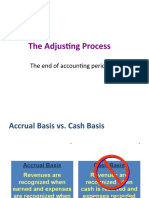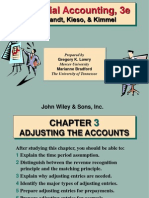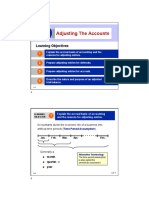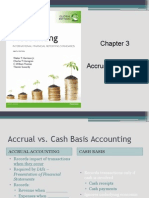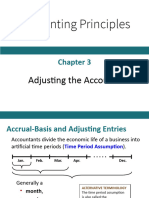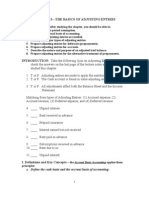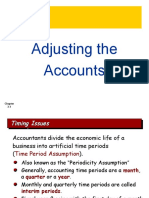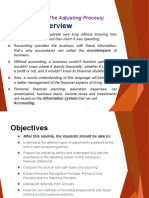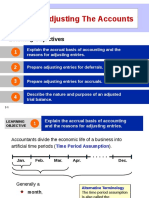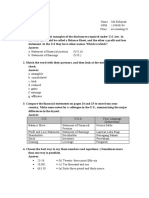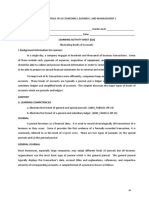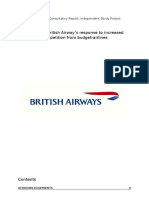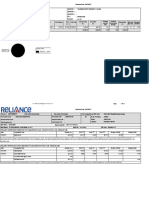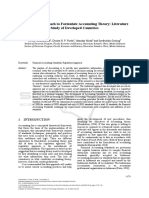0% found this document useful (0 votes)
10 views29 pagesChapter 3
Chapter 3 discusses the matching concept in accounting, which emphasizes reporting revenues and related expenses in the same period, and the necessity of adjusting entries to ensure accurate financial statements. It explains the differences between cash basis and accrual basis accounting, as well as the processes for deferrals and accruals, including examples of prepaid expenses and accrued revenues. The chapter concludes with exercises for practical application of the adjusting process.
Uploaded by
idonwannaseeyouanymoreCopyright
© © All Rights Reserved
We take content rights seriously. If you suspect this is your content, claim it here.
Available Formats
Download as PDF, TXT or read online on Scribd
0% found this document useful (0 votes)
10 views29 pagesChapter 3
Chapter 3 discusses the matching concept in accounting, which emphasizes reporting revenues and related expenses in the same period, and the necessity of adjusting entries to ensure accurate financial statements. It explains the differences between cash basis and accrual basis accounting, as well as the processes for deferrals and accruals, including examples of prepaid expenses and accrued revenues. The chapter concludes with exercises for practical application of the adjusting process.
Uploaded by
idonwannaseeyouanymoreCopyright
© © All Rights Reserved
We take content rights seriously. If you suspect this is your content, claim it here.
Available Formats
Download as PDF, TXT or read online on Scribd
/ 29




